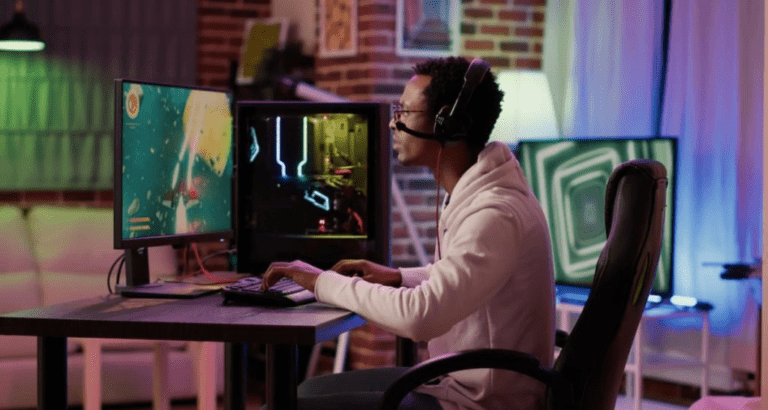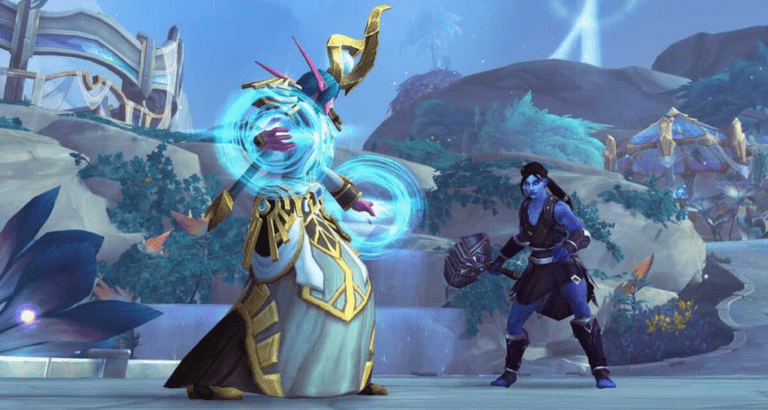Takeaway
Outsourcing game design can be a strategic move to enhance productivity and tap into specialized skills, but it requires a meticulous approach to maintain creative control. By establishing clear communication channels, setting defined expectations, and utilizing collaborative tools, game developers can successfully manage outsourced projects while preserving their creative vision.
Understanding the Landscape of Game Design Outsourcing
The video game industry has seen exponential growth, with a projected market value of over $200 billion by 2023 (Statista, 2023). As the demand for innovative and engaging games increases, many developers are turning to outsourcing as a viable solution to meet deadlines and access specialized talent. However, outsourcing can pose significant challenges, particularly in maintaining creative control over the project. This article delves into effective strategies for outsourcing game design without compromising your creative vision.
The Importance of Creative Control
Creative control is paramount in game design, as it directly influences the game’s narrative, aesthetics, and overall player experience. Losing this control can lead to a product that deviates from the original vision, resulting in a disjointed experience for players. Therefore, it is essential to implement strategies that allow for effective collaboration while ensuring that the core creative elements remain intact.

Establishing Clear Communication Channels
Effective communication is the backbone of any successful outsourcing endeavor. Establishing clear communication channels helps bridge the gap between your in-house team and the outsourced talent. Here are some strategies to enhance communication:
1. Utilize Project Management Tools
Tools such as Trello, Asana, or Jira can help streamline communication and project tracking. These platforms allow for task assignments, deadline management, and progress tracking, ensuring that everyone is on the same page. By using these tools, you can maintain oversight of the project while allowing the outsourced team to work independently.
2. Schedule Regular Check-Ins
Regular meetings, whether weekly or bi-weekly, can help maintain alignment between your team and the outsourced designers. These check-ins provide an opportunity to discuss progress, address concerns, and make necessary adjustments to the project scope. Video conferencing tools like Zoom or Microsoft Teams can facilitate these discussions, allowing for real-time feedback and collaboration.

3. Foster an Open Feedback Culture
Encouraging an open feedback culture is crucial for maintaining creative control. Create an environment where team members feel comfortable sharing their ideas and concerns. This can be achieved through structured feedback sessions or informal brainstorming meetings. By fostering a collaborative atmosphere, you can ensure that the outsourced team feels valued and invested in the project.
Setting Defined Expectations
Clearly defined expectations are essential for successful outsourcing. This includes outlining project goals, timelines, and deliverables. Here are some key aspects to consider:
1. Create a Comprehensive Brief
A well-structured project brief serves as a roadmap for the outsourced team. It should include details about the game’s concept, target audience, gameplay mechanics, art style, and any specific requirements. The more detailed the brief, the less room there is for misinterpretation. This document should also outline the creative vision and any non-negotiable elements that must be adhered to throughout the design process.
2. Define Milestones and Deliverables
Establishing clear milestones and deliverables helps track progress and ensures that the project stays on schedule. Break the project into manageable phases, each with specific goals and deadlines. This approach allows for regular assessment of the work being produced and provides opportunities for feedback and adjustments as needed.
3. Implement Quality Assurance Processes
Quality assurance (QA) is critical in game design, as it ensures that the final product meets the desired standards. Implementing a QA process that includes regular reviews of the outsourced work can help identify issues early on. This may involve playtesting, visual assessments, and adherence to design guidelines. By incorporating QA checkpoints throughout the project, you can maintain creative control and ensure that the final product aligns with your vision.
Leveraging Collaborative Tools
In today’s digital age, numerous collaborative tools can facilitate seamless communication and project management. Utilizing these tools can enhance collaboration between your in-house team and outsourced designers:
1. Version Control Systems
Version control systems like Git allow multiple team members to work on the same project simultaneously without overwriting each other’s contributions. This is particularly useful in game design, where assets and code are frequently updated. By using version control, you can track changes, revert to previous versions if necessary, and maintain a clear history of the project’s evolution.
2. Cloud-Based Asset Management
Cloud-based platforms such as Google Drive or Dropbox enable easy sharing and storage of game assets. These platforms allow for real-time collaboration, ensuring that all team members have access to the latest versions of assets and documents. This accessibility is crucial for maintaining consistency and coherence in the game’s design.
3. Collaborative Design Software
Tools like Figma or Adobe XD facilitate collaborative design processes, allowing multiple users to work on visual elements simultaneously. These platforms enable real-time feedback and iteration, ensuring that the design aligns with your creative vision. By leveraging collaborative design software, you can maintain oversight while empowering the outsourced team to contribute creatively.
Building a Strong Relationship with Outsourced Teams
Establishing a strong working relationship with outsourced teams is vital for successful collaboration. Here are some strategies to foster a positive partnership:
1. Invest Time in Onboarding
Take the time to onboard the outsourced team effectively. This includes introducing them to your company culture, design philosophy, and project goals. A thorough onboarding process helps the team understand your expectations and fosters a sense of belonging, which can lead to higher quality work.
2. Encourage Creative Input
While maintaining creative control is essential, it is equally important to encourage creative input from the outsourced team. They may bring fresh perspectives and innovative ideas that can enhance the project. By creating an environment where their contributions are valued, you can foster a collaborative spirit that benefits the overall design process.
3. Recognize and Reward Contributions
Acknowledging the efforts of the outsourced team can go a long way in building a positive relationship. Recognize their contributions publicly, whether through team meetings or project updates. Consider implementing a reward system for exceptional work, which can motivate the team to strive for excellence.
Conclusion
Outsourcing game design can be a powerful strategy for enhancing productivity and accessing specialized skills. However, it requires careful planning and execution to maintain creative control. By establishing clear communication channels, setting defined expectations, leveraging collaborative tools, and building strong relationships with outsourced teams, game developers can successfully navigate the outsourcing landscape while preserving their creative vision. Key takeaways include the importance of effective communication, the necessity of a comprehensive project brief, and the value of fostering a collaborative environment. By implementing these strategies, you can ensure that your outsourced projects align with your creative goals and deliver an engaging experience for players.

